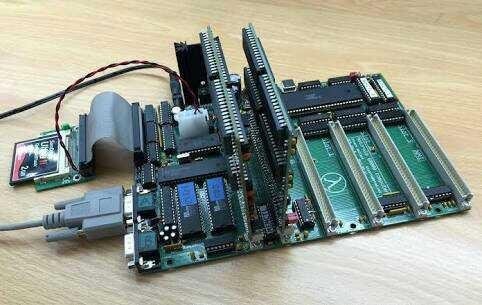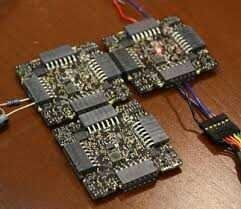Hackers Create Modular Motherboards

A group of hackers who are obsessed with hardware, making something revolutionary in the personal computer world (PC). They have created a prototype motherbooard module that can be dismantled pairs.
These modular motherboards each have their own modules for the processor, RAM and memory. Each square cell in this design serves as a standalone mini-motherboard. In it there is also a kind of knot to link each module in order to be one to the unit.
The modular mainboard design, called the Illuminato X Machina, is very different from the processor, memory and storage space of the existing components. Due to its ability to be dismantled and self-contained.
"We took everything that goes into the motherboard now and cuts it off," says David Ackley, a professor of computer science at the University of New Mexico and one of the doers for the project.

"We have CPU, RAM, data storage and serial ports for connectivity on every two square inches," he continued.
A modular architecture designed for parallel and distributed processing can help take computing to the next level.
This means, if in one component it has problems, it can still 'work' on the same motherboard.
"It's suitable for those of you who want to increase clock speed by adding cores, but you can still share resources in the system," Justin Huynh added.
"Adding cores as we do now has been going on for about a decade," he added.
As an illustration, the current device is based on the von Neumann architecture: the central processor, but the memory and data storage are separate.
But such designs sometimes cause significant problems known as von Neumann barriers. Although the processor can be faster, the connection between memory and processor can be overloaded. That's what limits the speed of computers to be able to transfer data between the two.
"A von Neumann machine is like a centralized planning economy, while our modular, bottom up, interconnected approach is more 'capitalist'," Ackley said.
"There are advantages to centrally planned structures but will eventually experience great inefficiencies," he added.
Each Machina X module has 72 MHz processor (current ARM chip), solid state drive of 16KB and 128kb electrically erasable programmable memory. There are also LEDs for display output and buttons for user interaction.
Each module has four sides, and each edge can connect to other systems. This device has no sockets, standard interconnect. Instead, the system uses reversible connectors.
"It's smart enough to know if it's plugged into other modules and can build the correct power and signal cables to exchange power and information," said Mike Gionfriddo, one of the designers on the project.
Each Illuminato X Machina node also has a custom boot loader software that allows it to be programmed and reprogrammed by modules next to it, even as the whole system goes on.
While the module is still under development to be mass-produced.